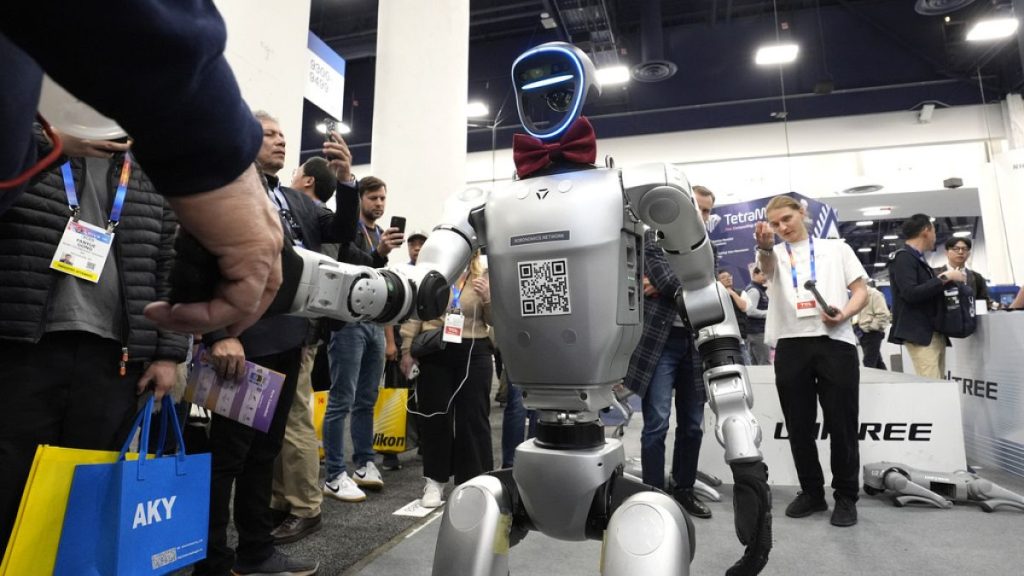The convergence of robotics and artificial intelligence (AI) is driving a profound transformation across numerous industries, marking a new era of automation and intelligent systems. Robots, once relegated to repetitive tasks in controlled environments, are rapidly evolving into sophisticated machines capable of complex actions, adaptability, and even a degree of autonomy. This evolution is fueled by advancements in AI algorithms, sensor technology, and computing power, enabling robots to perceive, learn, and interact with their surroundings in unprecedented ways. From manufacturing and logistics to healthcare and agriculture, the integration of AI-powered robots promises to reshape workflows, increase efficiency, and unlock new possibilities.
This revolution in robotics is characterized by several key advancements. Dexterity, the ability to manipulate objects with precision and skill, is dramatically improving thanks to sophisticated grippers, tactile sensors, and advanced control systems. Robots can now handle delicate items, perform intricate assembly tasks, and even adapt their grip in real-time based on the object’s properties. Simultaneously, mobility is also undergoing a significant transformation. Robots are no longer confined to fixed positions; advancements in locomotion, including legged robots and autonomous navigation systems, enable them to traverse complex environments, collaborate with humans in dynamic settings, and perform tasks in previously inaccessible locations. This newfound mobility opens up vast potential for applications in areas like exploration, disaster relief, and personalized assistance.
The impact of AI on robotics extends beyond dexterity and mobility. AI algorithms enable robots to learn from data, adapt to changing conditions, and make intelligent decisions. Machine learning techniques, including deep learning and reinforcement learning, allow robots to acquire new skills through experience, optimize their performance over time, and even exhibit a degree of problem-solving ability. This learning capability is crucial for enabling robots to operate effectively in unstructured environments, handle unexpected situations, and collaborate seamlessly with human counterparts. The combination of AI and robotics is creating a new generation of intelligent machines capable of not just automating tasks but also augmenting human capabilities and contributing to innovation across diverse fields.
The implications of this technological convergence are far-reaching. In manufacturing, AI-powered robots are optimizing production lines, enabling flexible automation, and improving quality control. In logistics, robots are streamlining warehouse operations, automating package handling, and facilitating last-mile delivery. In healthcare, robotic surgery systems are enhancing precision, minimally invasive procedures are becoming more accessible, and robotic assistants are providing personalized care for patients. The agricultural sector is also benefiting from robotic automation, with robots performing tasks like planting, harvesting, and crop monitoring, increasing efficiency and addressing labor shortages. These are just a few examples of the transformative potential of AI-powered robotics across various sectors.
However, alongside the immense opportunities, the rise of AI-powered robotics also presents challenges. Concerns about job displacement due to automation are prominent, requiring proactive strategies for workforce retraining and adaptation. Ethical considerations regarding the use of robots in sensitive areas like healthcare and defense also demand careful attention. Ensuring the safety and security of AI-powered robotic systems is paramount to prevent unintended consequences and malicious exploitation. Furthermore, the development and deployment of these technologies require significant investment in research and development, infrastructure, and education. Addressing these challenges effectively will be crucial to harnessing the full potential of AI-powered robotics while mitigating potential risks.
Looking ahead, the integration of AI and robotics is poised to accelerate, driving further innovation and transforming the way we live and work. Advancements in areas like computer vision, natural language processing, and human-robot interaction will enable robots to perceive and understand the world more effectively, communicate with humans more naturally, and collaborate more seamlessly in complex tasks. The development of more adaptable and resilient robots will expand their applicability to a wider range of environments and scenarios. As AI algorithms become more sophisticated and robots become more integrated into our daily lives, the distinction between human and machine capabilities will continue to blur, ushering in an era of unprecedented collaboration and potential. The future of robotics is inextricably linked with the advancement of artificial intelligence, promising a future where intelligent machines play an increasingly integral role in shaping our world.














